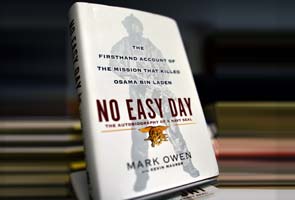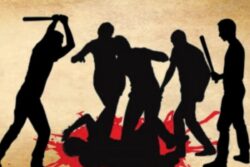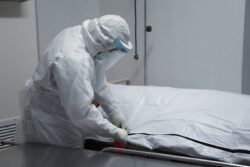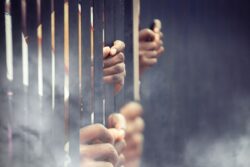SEAL’s book: Hair dye but no bullets in Osama bin Laden’s room

Washington: When US Navy SEALs gunned down Osama bin Laden in his bedroom, it was up to one commando to take photos that would serve as proof of the Al-Qaeda leader’s bloody demise.
“I started to wipe the blood away from his face using a blanket from the bed. With each swipe, the face became more familiar. He looked younger than I expected.”
 “His beard was dark, like it had been dyed,” the former Navy SEAL, Matt Bissonnette, recalls in his new book, “No Easy Day.”
“His beard was dark, like it had been dyed,” the former Navy SEAL, Matt Bissonnette, recalls in his new book, “No Easy Day.”
His eyewitness account of the raid, which was released on Tuesday, has angered senior officers and drawn a warning of potential legal action from the Pentagon, which says the author revealed classified information.
As for the book, it is a gripping read, even if it often resorts to the macho cliches typical of the genre.
His account also conveys how “Operation Neptune Spear” was fraught with risk and uncertainty, with troops flying deep inside Pakistan without Islamabad’s knowledge. But in the end, the raid was all over in a matter of minutes with no gun battle and little drama.
After an unarmed bin Laden was shot in the head and then pumped full of bullets, it fell to Bissonnette to take the only photos of the Al-Qaeda chief after his death.
“It was strange to see such an infamous face up close. Lying in front of me as the reason we had been fighting for the last decade.”
“It was surreal trying to clean blood off the most wanted man in the world so that I could shoot his photo.”
After taking pictures of bin Laden’s full body — the images were never released — the commando kneeled down with his camera to capture the man’s face.
“Pulling his beard to the right and then the left, I shot several profile pictures. I really wanted to focus on the nose. Because the beard was so dark, the profile shot was the one that really stood out in my mind,” he said.
At one point he asks a favor from his fellow commando: “‘Hey, man, hold his good eye open.'”
To confirm bin Laden’s identity, the SEALs try to get someone in the compound to identify the tall man lying in a pool of blood. A woman refuses, but a girl tells the commandos what they had hoped.
“The girl didn’t know to lie” he writes.
Although packed with intriguing anecdotes, the book offers no major revelations that change the fundamental version of events, despite the author’s vow to set the record straight.
About half of the 313-page book does not even touch on the raid in Abbottabad, barely a few hours’ drive from the Pakistani capital Islamabad.
Instead, the former SEAL describes his upbringing in Alaska where he learned to hunt as a boy, the grueling training that preceded his joining the elite SEAL “Team Six,” other raids in Iraq and Afghanistan and the successful rescue of an American captured by Somali pirates.
He complains that in Afghanistan, the special forces’ nighttime raids were increasingly hampered by what he deemed bureaucratic red tape.
“It took pages of PowerPoint slides to get a mission approved. Lawyers and staff officers pored over the details on each page, making sure our plan was acceptable to the Afghan government,” he wrote.
“Policy makers were asking us to ignore all of the lessons we had learned, especially the lessons in blood, for political solutions.”
In the bin Laden operation, he describes searching the Al-Qaeda leader’s bedroom, finding hair dye but no stockpile of bullets.
Above the bedroom door, he finds two guns, “which turned out to be an AK-47 and a Makarov pistol in a holster.”
“They were both empty. He hadn’t even prepared a defense. He had no intention of fighting,” he says, expressing disgust for a man who appears to have relied on others to wage his extremist battles.
He then discovers why bin Laden’s beard was not grey — as intelligence analysts had predicted — finding a bottle of “Just for Men” hair dye in the bathroom.
On the flight out of Pakistan, the author focuses on how the crash of one of two helicopters in the operation could have caused havoc with the mission.
“Just more than an hour ago, I thought we were all going to die in a helicopter crash. It was funny, the crash stuck with me a lot longer than getting shot at through the door.”
He credits the pilot with a skillful crash landing but he worries that the team had to leave before their job was finished, having had to rush out without fully searching the compound.
“Part of me felt like we had failed despite the body at my feet,” he writes, referring to bin Laden’s corpse on the floor of the chopper.
“We weren’t able to get as much intelligence as we could have. We left drawers unopened.”





